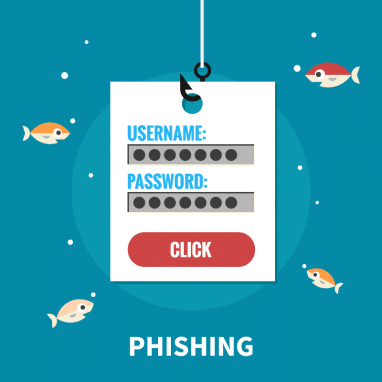What is Phishing?
Phishing scams aim to trick you into providing personal and sensitive information by clicking on links and attachments.
How does it work?
It occurs when an attacker pretends to act as a trusted entity and dupes a victim into opening an email or other electronic messages.
Phishing messages are designed to look genuine and will often copy the format used by the entity the attacker is pretending to represent. It will contain links that take you to a fake website that looks authentic but will have slight differences, such as spelling.
What are the other types of phishing?
Spear Phishing. Attackers specifically target high-value victims and organisations. This is done via the use of personal details and is often gathered via social engineering.
Whaling. This attack targets organisation’s top executives. The victim is considered high-value and the stolen information is more valuable than that of a regular employee.
Vishing. This is simply ‘voice phishing’, typically a voicemail disguised as a communication from a financial institution/technology support. It may ask the victim to call a number and enter their account information.
Pharming. Occurs when a scammer redirects you to a bogus site of a legitimate website you were intending to visit.

What to keep an eye out for.
- You notice new icons on your desktop, or that your computer is not working as fast as it usually does.
- The email or message does not address you by your proper name.
- The communication claims to be a financial institution or a service provider and asks you to update or verify your details. It may also contain typing errors and grammatical mistakes.
Protect yourself.
- Be suspicious of any unsolicited communications you receive.
- Don’t click on any links or attachments in any email or other electronic messages you feel is suspicious.
- Don’t use the contact details provided in the email. Find them through an independent source such as an online search.
- Keep your office networks, computers and devices secure. Update your software and backup your data regularly.
Think you have been phished? Contact Mac Aid and your financial institution immediately.

Quick Facts (available from Australian Competition & Consumer Commission: Scamwatch).
In November 2017:
1983 reports of phishing
34.8% via emails and 21.3% via text messages.
In December 2017:
1344 reports of phishing
38.7% via emails and 18.7% via text messages.
Imagine how many have gone unreported!










